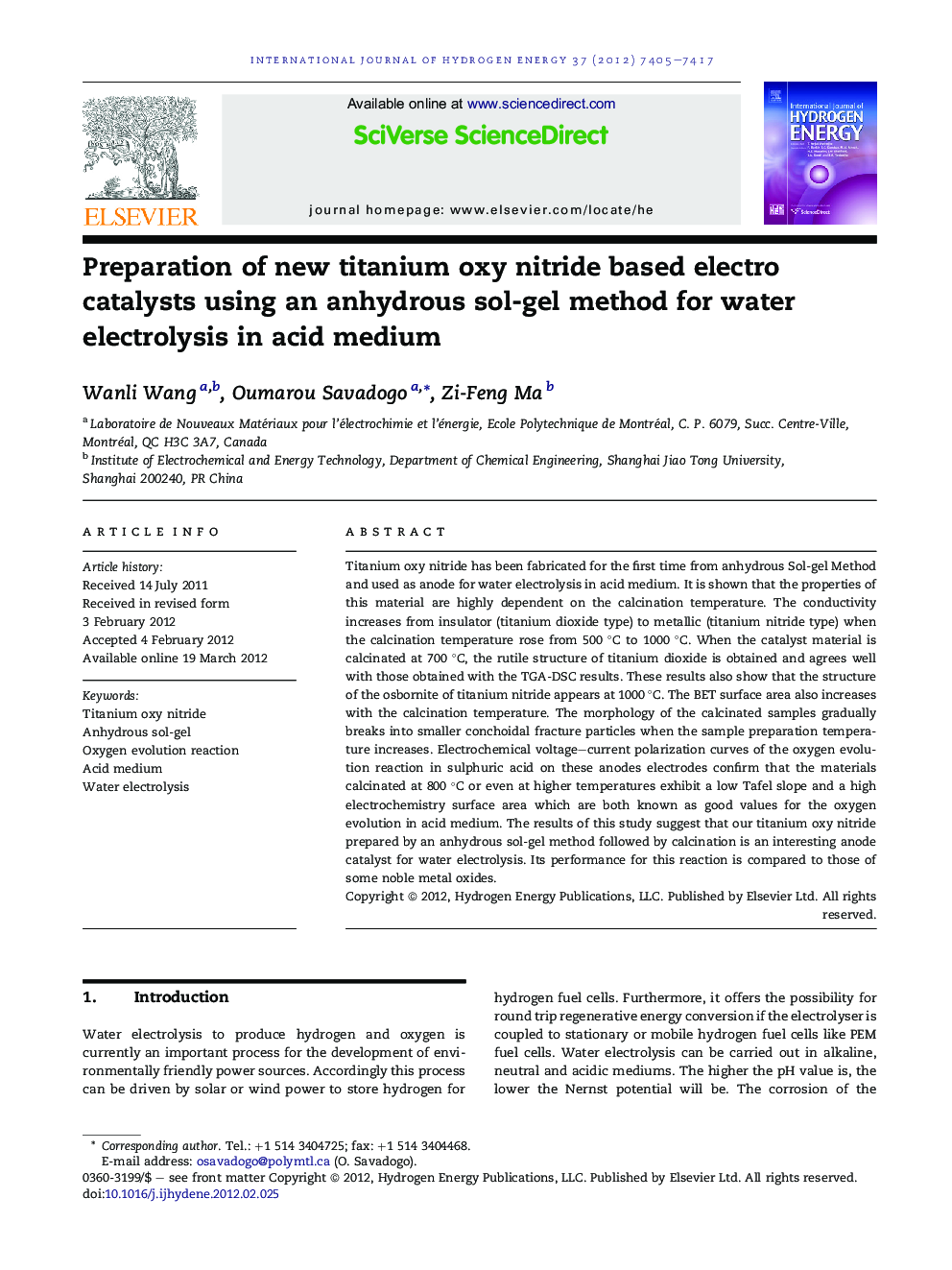| Article ID | Journal | Published Year | Pages | File Type |
|---|---|---|---|---|
| 1278542 | International Journal of Hydrogen Energy | 2012 | 13 Pages |
Titanium oxy nitride has been fabricated for the first time from anhydrous Sol-gel Method and used as anode for water electrolysis in acid medium. It is shown that the properties of this material are highly dependent on the calcination temperature. The conductivity increases from insulator (titanium dioxide type) to metallic (titanium nitride type) when the calcination temperature rose from 500 °C to 1000 °C. When the catalyst material is calcinated at 700 °C, the rutile structure of titanium dioxide is obtained and agrees well with those obtained with the TGA-DSC results. These results also show that the structure of the osbornite of titanium nitride appears at 1000 °C. The BET surface area also increases with the calcination temperature. The morphology of the calcinated samples gradually breaks into smaller conchoidal fracture particles when the sample preparation temperature increases. Electrochemical voltage–current polarization curves of the oxygen evolution reaction in sulphuric acid on these anodes electrodes confirm that the materials calcinated at 800 °C or even at higher temperatures exhibit a low Tafel slope and a high electrochemistry surface area which are both known as good values for the oxygen evolution in acid medium. The results of this study suggest that our titanium oxy nitride prepared by an anhydrous sol-gel method followed by calcination is an interesting anode catalyst for water electrolysis. Its performance for this reaction is compared to those of some noble metal oxides.
